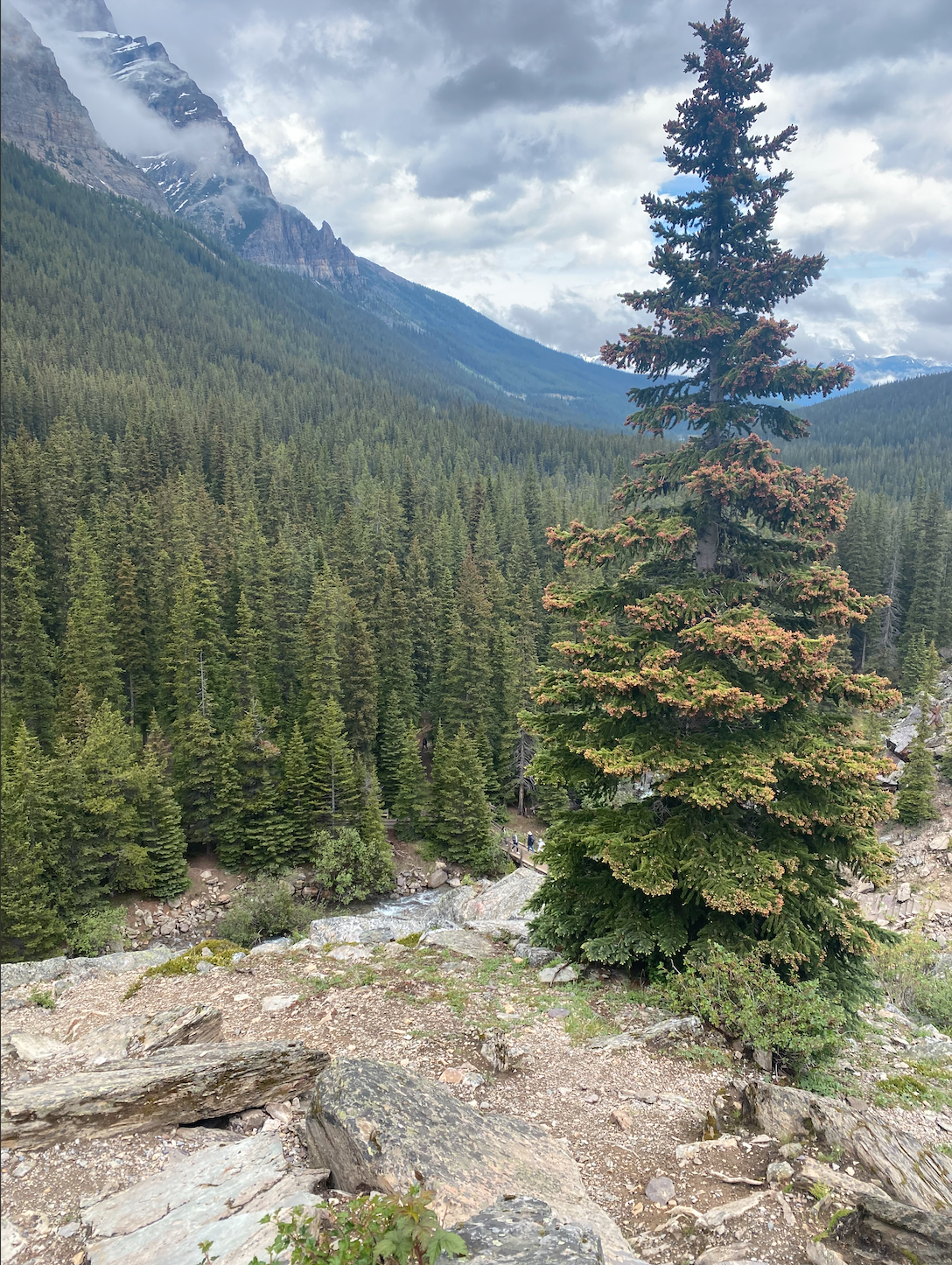How Fire Suppression Has Exacerbated Forest Fires in the United States
Banff, AB
Stella Wettan: Co-founder
While the frequency of forest fires across the U.S. has steadily decreased over the past 30 years, the severity of these forest fires has dramatically risen. According to the Congressional Research Service, the average acreage burned by forest fires in the past two decades has doubled since the 1990s. Additionally, both the increasing severity of forest fires and human settlement in lands that are more susceptible to forest fires, have heavily exacerbated wildfire damages.
Why?
Climate change plays a significant role in the growing intensity of forest fires. Warmer weather has led to longer summers, warmer springs, dry soils and dry vegetation. These shifts have lengthened wildfire seasons, making forests more susceptible to mega-fires. Similarly, forest fire suppression has made forests less resilient to change, by disrupting their natural fire regime.
Fires are not always the enemy; in fact, they play a vital role in the health of forest ecosystems. Firstly, they clear out low growing underbrush, forest floor debris, and weaker trees, which minimizes competition for nutrients. Additionally, fires that clear out debris expose the forest soil to sunlight improving its quality. Most importantly, certain species of trees rely on fires for reproduction. Chaparral plants, for example, require intense heat for seed germination. Because fires are a part of the forest ecosystem’s natural cycle, forests that are managed, rather than completely protected from fire, are more resilient to mega-fires and larger disturbances. Allowing some wildfires to persist when appropriate, improves stream flow and soil moisture, reduces drought, and increases fire resilience–the ability of an ecosystem to recover after a large disturbance–through the creation of natural firebreaks. What’s more, fires reduce the ecosystem’s demand for water by preventing overcrowding vegetation, improving water availability, and preventing the existing vegetation from drying out.
History of Forest Fire suppression:
The US government established the U.S. Forest Service in 1905. Soon afterwards in 1910, several forest fires across Idaho, Washington, and Montana burned down 3 million acres of land. This catastrophic event, referred to as the “Big Blowup,” would largely influence the national fire policy in the years to come.
Because of this event, regional and national Forest service administrators came to believe that putting out all fires as quickly as possible would prevent an event like that of the “Big Blowup” from occurring again. The Civilian Conservation Corps, an organization that worked to build numerous fire breaks and employed thousands of men to suppress fires across the United States, was established in 1933. Two years later, the Forest Service implemented the 10 am policy, which required that every forest fire be suppressed by 10 a.m. the day after its initial report. This trend of immediate suppression following the emergence of a wildfire persisted well into the 60s and early 70s. When scientific research revealed the benefits of letting certain natural fires burn in order to preserve a forest’s natural burn cycle, policies surrounding fire suppression started to drastically shift. It is crucial that we continue to recognize the benefits of forest management, as opposed to total fire suppression, in order to effectively mitigate the impact of forest fires.
Adapt to more wildfire in western North American forests as ... - PNAS. (n.d.). Retrieved July 17, 2022, from https://www.pnas.org/doi/10.1073/pnas.1617464114
Area burned at high severity is increasing in western U.S. forests: Rocky Mountain Research Station. Area burned at high severity is increasing in western U.S. forests | Rocky Mountain Research Station. (1970, January 1). Retrieved July 16, 2022, from https://www.fs.usda.gov/rmrs/science-spotlights/area-burned-high-severity-increasing-western-us-forests
Environmental Protection Agency. (n.d.). EPA. Retrieved July 16, 2022, from https://www.epa.gov/climate-indicators/climate-change-indicators-wildfires#tab-4
Risk assessment for wildfire in the Western United States. (n.d.). Retrieved July 17, 2022, from https://www.fs.fed.us/pnw/pubs/pnw_gtr870/pnw_gtr870_011.pdf
Robert Sanders, M. relations| O. 24, & Sanders, R. (2018, October 29). Wildfire management vs. Fire Suppression Benefits Forest and Watershed. Berkeley News. Retrieved July 16, 2022, from https://news.berkeley.edu/2016/10/24/wildfire-management-vs-suppression-benefits-forest-and-watershed/
U.S. Forest Service Fire Suppression. Forest History Society. (2020, April 9). Retrieved July 16, 2022, from https://foresthistory.org/research-explore/us-forest-service-history/policy-and-law/fire-u-s-forest-service/u-s-forest-service-fire-suppression/
Wildfire Statistics - Federation of American scientists. (n.d.). Retrieved July 17, 2022, from https://sgp.fas.org/crs/misc/IF10244.pdf
Wotton, B. M., Nock, C. A., & Flannigan, M. D. (2010, May 13). Forest fire occurrence and climate change in Canada. CSIRO PUBLISHING. Retrieved July 16, 2022, from https://www.publish.csiro.au/WF/WF09002
